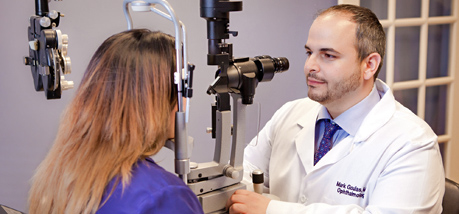CATARACT SURGERY

Cataract surgery is a procedure to remove the lens of your eye and replace it with an artificial lens. The surgery is used to treat the clouding of the normally clear lens of your eye.
Cataract surgery is performed by an ophthalmologist on an outpatient basis, which means you don’t have to stay in the hospital after the surgery. Cataract surgery is very common and is generally a safe procedure that takes an hour or less to perform. The surgery is performed to remove and treat cataracts. Cataracts can cause blurry vision and increase the glare from lights. If a cataract makes it difficult for you to carry out your normal activities or interferes with the treatment of another eye problem, the surgery will be recommended. For example, doctors may recommend cataract surgery if a cataract makes it difficult for your eye doctor to examine the back of your eye to monitor or treat other eye problems such as age-related macular degeneration or diabetic retinopathy.
In most cases, waiting to have cataract surgery won’t harm your eye, so you have time to consider your options. If your vision is still quite good, you may not need cataract surgery for many years.
Complications after cataract surgery are uncommon, and most can be treated successfully.
Cataract surgery risks include:
- Inflammation
- Infection
- Bleeding
- Swelling
- Retinal detachment
- Glaucoma
- Secondary cataract
- Loss of vision
Your risk of complications is greater if you have another eye disease or a serious medical condition affecting any part of your body. First, your doctor will place eye drops in your eye to dilate your pupil. You’ll receive local anesthetics to numb the area, and you will be given a sedative to help you relax. During cataract surgery, the clouded lens is removed, and a clear artificial lens is usually implanted. Once the cataract has been removed by extracapsular extraction, a clear artificial lens is implanted into the empty lens capsule. This implant, known as an intraocular lens (IOL), is made of plastic, acrylic or silicone. You won’t be able to see or feel the lens. It requires no care and becomes a permanent part of your eye. A variety of IOLs with different features are available. The surgeon folds this type of lens and inserts it into the empty capsule where the natural lens used to be. Once inside the eye, the folded IOL unfolds, filling the empty capsule.
Discuss the benefits and risks of the different types of intraocular lenses with your eye doctor to determine what’s best for you. After cataract surgery, expect your vision to begin improving within a few days. Your vision may be blurry at first as your eye heals and adjusts. You’ll be seeing your eye doctor the day after your surgery, the following week, and then again after about a month to monitor healing.
It’s normal to feel itching and mild discomfort for a couple of days after surgery. Avoid rubbing or pushing on your eye. Your doctor will prescribe eye drops to prevent infection, reduce inflammation and control eye pressure. After a couple of days, most of the discomfort should disappear. Often, complete healing occurs within eight weeks.
Contact your doctor immediately if you experience any of the following:
- Vision loss
- Pain that persists despite the use of over-the-counter pain medications
- Increased eye redness
- Light flashes or multiple new spots (floaters) in front of your eye
- Nausea, vomiting or excessive coughing
Most people need glasses, at least some of the time, after cataract surgery. Your doctor will let you know when your eyes have healed enough for you to get a final prescription for eyeglasses.

